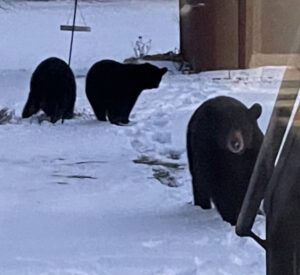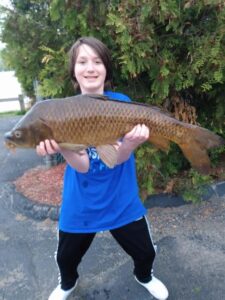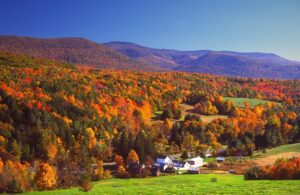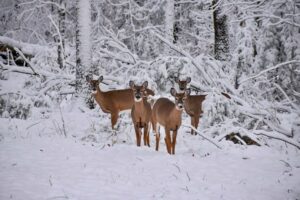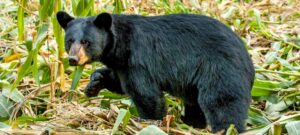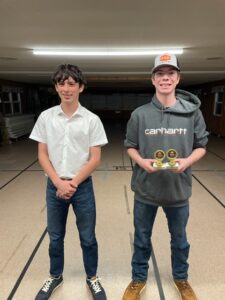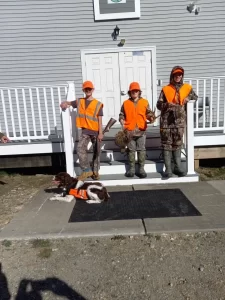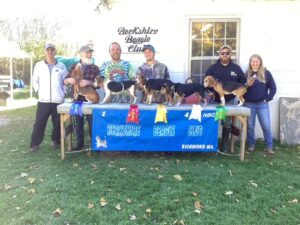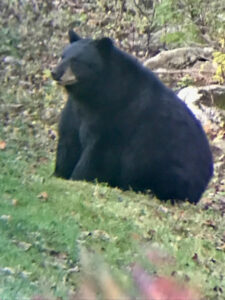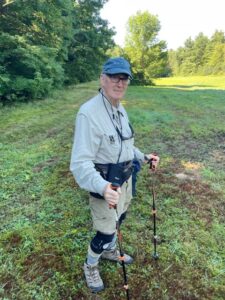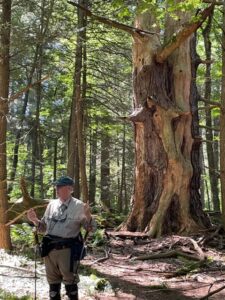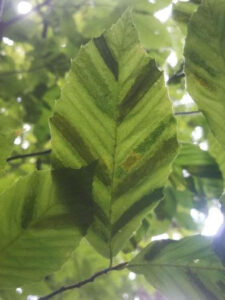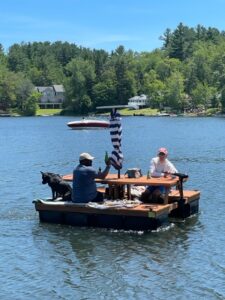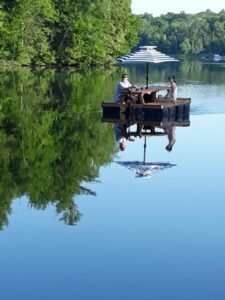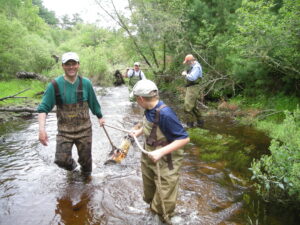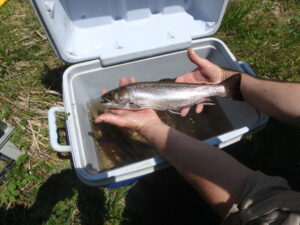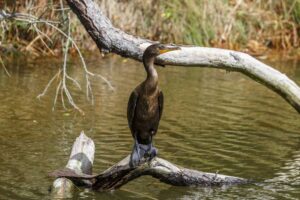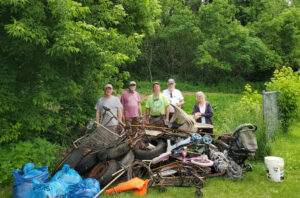At the end of last year, I highlighted the more informative and interesting articles that were included in this column during the year. Because of positive comments received, I am doing the same for the year 2022.
In January we reported that seventeen women deer hunters participated in MassWildlife’s 2021 Becoming-an-Outdoors-Woman (BOW) Deer Hunt Program. Nearly all the women saw deer and all participants enjoyed their hunt. Two women harvested their first deer ever. We also mentioned a lost Steller’s Sea Eagle (Haliaeetus pelagicus), which is native to Asia. Somehow it found its way to the Taunton River in Massachusetts.
In March there was an article about Bob Leverett “the old growth evangelist”. He informed us that there were indeed old growth forests in Massachusetts. He developed ways for measuring and aging them and their ability to capture carbon. His work, along with that of Dr. Anthony D’Amato (of University of Vermont), have helped to ensure the protection of 1,200 acres of old growth in the Commonwealth’s Forest Reserves. His message is “We have a duty to protect an old-growth forest, for both its beauty and its importance to the planet”. We learned of the death of Leo M Daley who spent some 42 years with the DFW. He had held the titles of Aquatic Biologist, Fisheries Manager, and interim District Manager. In the 30 years spent in our district, he stocked over 1.5 million trout in Western Massachusetts waters.
In March and April there were articles about hungry black bears emerging from their dens and the problems they cause by raiding our bird feeders. In the Berkshires there are about 2,000 of them and readers were advised on how to avoid conflicts with them. MassWildlife Black Bear and Furbearer Biologist Dave Wattles’ study showed that female bears that they study in more suburban areas are very large, with weights averaging more than 250 pounds, compared to bears in more rural, forested areas averaging closer to 150 pounds. A second big takeaway was how close to people bears will den. They had bear dens 10 yards off the back parking lot of a fire department, under a building on piling foundations, on the edge of a backyard, and in the middle of a construction yard. These bears had plenty of options to den in more remote locations but chose not to, indicating bears are finding supplemental food sources in suburban areas, such as unsecured garbage, bird feeders, and open compost. Biologists warn that human food sources are harmful to bears’ natural diets and put communities at added risk of unwanted conflicts.
In April we learned about the numbers and types of wildlife violations that our Massachusetts Environmental Police are dealing with. A pitch was made for Massachusetts to join the Interstate Wildlife Violator Compact, a network that seeks to reduce wildlife poaching through information sharing across state lines and reciprocal recognition of license suspensions and revocations for fishing, hunting, and trapping. The legislation, co-sponsored by Berkshire State Representatives Tricia Farley-Bouvier and Paul Mark, would update the Commonwealth’s outdated penalties for illegal hunting, some of which have not been updated in a century and currently amount to little more than a slap on the hand. The bill passed later this year.
In April we reported that the highly pathogenic Avian Influenza was detected in wild birds in multiple locations in Massachusetts. Avian flu, also known as bird flu, is a common influenza strain that can spread from birds to humans through saliva, naval secretion and feces. The avian flu is not common among humans, but is very contagious among birds. We reported the Preliminary 2021 deer harvest figures verses last year figures:
- Youth Deer/Paraplegic Hunt Days: 86 vs 131 last year
- Archery Season: 5,894 vs 6655 last year
- Shotgun Season: 5,008 vs 5138 last year
- Primitive Firearms Season: 2,375 vs 2842 last year
Although Western Zone harvests were not mentioned, DFW Western District Supervisor Andrew Madden said that they were consistent with 2020 (which was a record year).
In May, 5 individuals received Silvio O. Conte sportsmen awards: The late Chris Puntin, formerly of Pittsfield, received the Sportsman of the Year Award posthumously; Meredyth Babcock of Becket received the Outstanding Achievement Award; Stephanie Dupont of Pittsfield received the Sportsmen’s Appreciation Award; Donald E. Girard of Adams received the Lifetime Achievement Award and Gregg Armstrong, of North Adams, received the John Zuber Award. We also reported that after 38 years of state service, Marion E. Larson retired in early March from her position as Chief of MassWildlife’s Information and Education (I&E) Section. Joshua Christman of Pittsfield, who had been named Massachusetts Angler of the Year (Adult Catch and Keep Category) in 2016, 2020 and 2021 by MassWildlife and a frequent multi-gold pin awardee, was off to another good start this year. He caught a large rainbow trout out of Berkshire waters which measured 24 inches long and weighed 4 lbs.
In June Berkshire Environmental Action Team Executive Director Jane Winn announced that BEAT was awarded $200,000 from the Cultural Facilities Fund of the Massachusetts Cultural Council to renovate their new Environmental Leadership & Education Center. Thirteen-year old Logan Middlebrook of Pittsfield landed a carp out of Pontoosuc Lake which weighed in at 13.3 lbs. and was over 30 inches long. While fighting it he had to cross 2 house lots, a couple of bridges and over people’s docks.
James McGrath, Park, Open Space, and Natural Resource Program Manager, City of Pittsfield announced that the Mill Street dam was successfully removed along with over 8,000 tons of contaminated sediments. Lee Sportsmen’s Association Higher Education Scholarship was awarded to Brianna Kelly. The Bateman Jimmy Fund fishing derby was the greatest with over 355 people in attendance and over $10,000 raised.
In July, Joshua Christman, organizer of Carp Palooza, announced that it was a great event with 39 teams participating. Steve Sears of Dalton was elected Acting Chairman of the MA Fish & Wildlife Board. We featured an article about a Picnic Table Boat. It is powered by an electric motor, and if you run out of power, it has a solar panel on the top of the umbrella which recharges the battery. The battery has a USB port into which they plug in lights, a speaker, an iPad, cooler, etc.
In August we covered the 75th anniversary of the Stockbridge Bowl Association. Feature speaker was the old growth evangelist Bob Leverett. We covered successful flyfishing trips to Labrador and Yellowstone National Park made by local anglers. Eight-year-old Michael (Mikey) Hubbard of Pittsfield successfully landed a 21-inch, 4.4lbs largemouth bass.
In September, Travis Bailey of Lee harvested a bear weighing 620 lbs. field dressed. After it was skinned out, it measured 7 feet from nose to tail, with a space between its ears of 10 inches. Rachel Kanter of Lenox landed a monster 35-inch pike.
In October we reported that It was a good year for MassWildlife/ Department of Fish & Game land acquisitions and conservation completing 11 projects and protecting 937 acres. Great Barrington approved a new ordinance to help curb problem bears.
In November Paraplegic hunters took four deer in the Berkshires, seven statewide. The Youth pheasant hunt produced happy hunters. Some $483,922 was awarded in state grant funds to improve wildlife habitat on 514 acres of land within the Commonwealth.
In December we did an article about MassWildlife’s controlled burns. National Geographic wrote an article titled, ‘This Trail May Be the Best Way to See New England’s Fall Colors”. The specific Berkshires trail mentioned was BNRC’s High Road. The town of Nahant hired sharpshooters to eliminate its coyote problem. DFW Western District Supervisor had a great article in Massachusetts Wildlife about feeding bears.
During the year, we reviewed three books, two by local authors. The Richmond Pond Association and the Richmond Historical Commission produced a book entitled, The Gem of Richmond: A History of Richmond Pond. The editor was Ken Kelly, of Lenox and Richmond. Paul C. Carter of Dalton came out with a new deer hunting book entitled, More Deer Hunts, through a Tracker’s Eyes. Author Robert (Bob) Romano came out with a wonderful book entitled River Flowers. All were still highly recommended.
Thanks for taking the time to read the columns this past year and hopefully you’ll stay with us next year.
Happy New Year!

